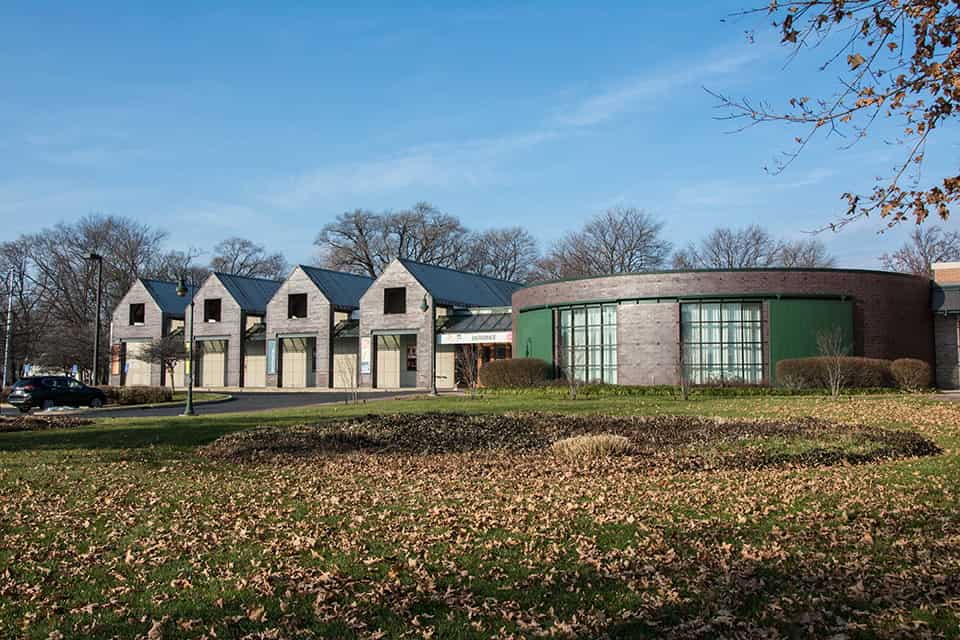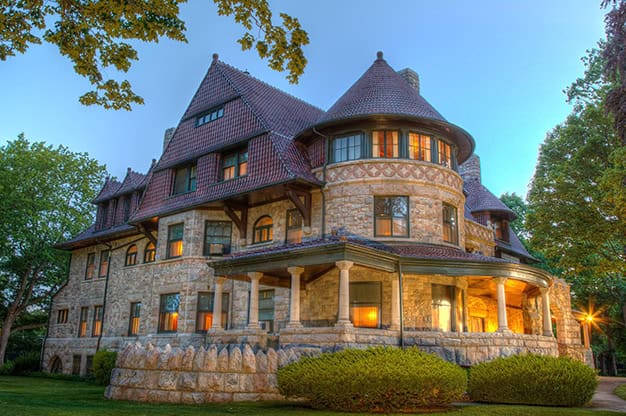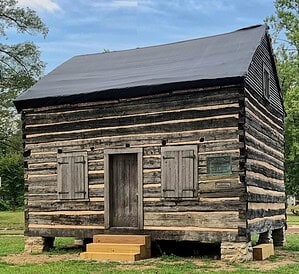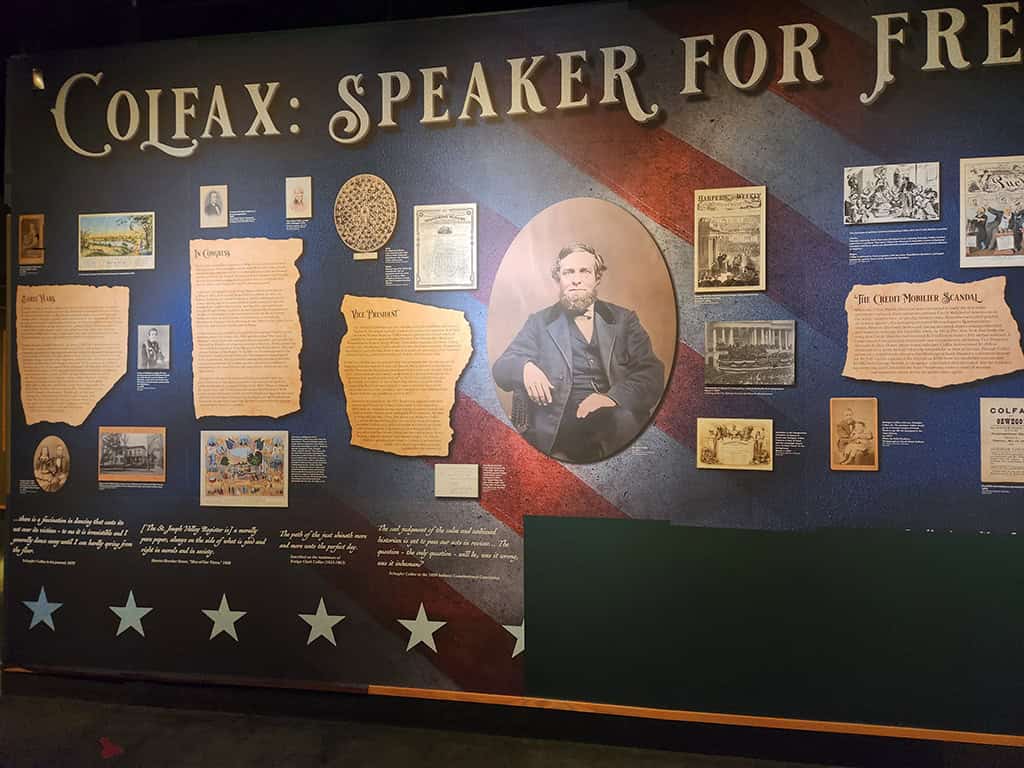MISSION STATEMENT
The History Museum provides knowledge to make a positive impact on the future by collecting, preserving, and interpreting our region’s heritage.
VISION STATEMENT
We envision a community engaged in discovering and understanding the history of the St. Joseph River Valley in Indiana and Michigan to learn from the past, inform the present, and inspire a better future.
Established in 1867 and located in the heart of South Bend, The History Museum educates and enlightens the public through its exhibits, guided tours, public programs, and a collection of over 600,000 artifacts. It has a significant presence in the Midwest as a nationally accredited museum campus. Through its offerings, The History Museum is a place where the past is documented so that the present may be better understood.

At its center is a 40,000 square foot history museum with seven exhibit galleries. Our main entrance is located on Thomas Street, and free parking is right outside the front door of the building.
Inside the front doors is the lobby, where the friendly Visitor Services staff members stand ready to greet visitors, sell admission tickets, and offer information about the museum.

The fragrant Historic Oliver Gardens surrounding Copshaholm provide a lush backdrop to the 38-room Victorian mansion. Brick walkways line the Sunken Gardens. Its Tea House is an elegant focal point of the Tennis Lawn, and the Pergola, a grapevine-covered walkway, extends from the Oliver Mansion.
The Worker’s Home, interpreted as the residence of a 1950s African American family, explores our community’s African American history as well as the Great Migration and the Civil Rights Movement.
Nearby is the Navarre Cabin. Built circa 1820, the cabin is the oldest structure in the community, home of Pierre Navarre, the county’s first pioneer settler. Recently relocated to The History Museum’s campus from a nearby park, the cabin will be the main structure of a homestead that is currently being planned. Programs for the public and school students are being scheduled for 2025.
With its handsome brick walls and comfortable seating for 125, a large stage and podium, WiFi capabilities, and technological options, the Wiekamp Auditorium can accommodate large groups for public programs as well as private business meetings.
The Leighton Gallery, with its winding staircase, is home to the exhibit Unseen Treasures of the Oliver Mansion, presenting unique stories of the Oliver family as well as the mansion’s artifacts. Stylishly elegant, the space is also an elegant location for private events.
At one time the area where the Oliver family housed their automobiles, carriages, and horses, the Carriage House maintains that original atmosphere with its brick floors. Here, public programs and private parties can absorb the room’s historic feel. It now is part of The History Museum’s main building.

The Raclin Gallery of Notre Dame History showcases changing exhibits that engages visitors with stories of the University’s long and outstanding history.
The permanent exhibit First in Their Field transports visitors in time to the 1940s and ‘50s when the All-American Girls Professional Baseball League, including the South Bend Blue Sox, was active. With teams throughout the Midwest, the league’s story was immortalized in the film “A League of Their Own.”


Through seven exhibits in Voyages Gallery, visitors can explore compelling stories of the people of the St. Joseph River Valley, from the prehistoric era to present-day cities. Self-guided tours encourage visitors to savor each moment of their experience for as long as they like.

The Site chronicles the area’s prehistory, beginning 600 million years ago when the St. Joseph River Valley was at the bottom of the Paleozoic Sea which covered most of North America. The chronology continues through the French exploration of the land in the 1600s.
Visitors can imagine walking the path that connected the Great Lakes to the Gulf of Mexico in Along the Portage. Hardwood forests and grasslands are two natural environments depicted in this area.
In New Order on the Land, stories of the settlements of the late 1700s and early 1800s are explained, including the founding of South Bend and its beginning as a small trading post. Here, the forced removal of the Potawatomi from the area in the 1830s is told.
A replica of a dredge boat used in the late 19th century to drain the Kankakee Marsh can be found in Using the Land. Images of dredging and draining the swamp help tell this story. The stories of early pioneer farm life in the St. Joseph River Valley are also detailed.
The Free Life Theatre features a 30-minute award-winning video documentary of the African American community in the St. Joseph River Valley region from the 1820s through World War I. A significant portion of the area focuses on Underground Railroad sites found in northern Indiana and southern Michigan. One of the most solemn moments of our nation’s history, the Civil War is remembered in A Nation Divided. Stories are told of Camp Rose and Camp Ellis, which were local camps accommodating over 1,000 men during the Civil War.
Schuyler Colfax is undoubtedly the most notable political figure in the history of the St. Joseph River Valley. In Colfax: Speaker for Freedom, his life in chronicled. Colfax was an ardent abolitionist and is best known for his roles as Speaker of the House under Abraham Lincoln and Vice President under Ulysses S. Grant. He was instrumental in many political achievements, including the passage of the Thirteenth Amendment, which abolished slavery in the United States. Colfax was well-loved in his time, traveling across the U.S. as a much sought-after touring lecturer. His legacy lives on through the dozens of counties, cities, and streets named in his honor across the country.
In Wheels of Power, the story of the region’s growth during the last half of the 19th century to one of the leading industrial sites in the Midwest is told. It details many of the area’s leading industries at the turn of the century, including Studebaker’s and the Oliver Chilled Plow Works.
Exploring history by theme rather than chronological order is offered to the visitor in Material Matters. Here recreation, travel, food, community and shelter are featured themes.

Young ones are thrilled with Kidsfirst, a hands-on area that engages children in imaginative, interactive experiences.


When you arrive, please let our Visitor Services staff member know that you are new to the museum. He or she will be ready to answer all questions and cheerfully provide you with whatever information will be helpful to make your visit a wonderful experience.
Make sure you get information about becoming a member, because once you visit The History Museum, we hope you’ll return again very soon!
The cheerful sound of families exploring history at our museum is a welcome one. Families find that the historic houses and exhibits at The History Museum are intriguing and fun. Visits to our museum is very affordable for families because special rates apply to youth 6 – 17, and children 5 and under are free. With free, convenient parking and other amenities, a family visit has much added value. Studebaker National Museum is adjacent to The History Museum, creating an opportunity for a full day of fun. And virtually within blocks are three other museums and several other attractions, providing out-of-town visitors with ample experiences from which to select.
For individuals who are 60-plus, The History Museum has special admission rates as well as special membership rates. Seniors might also be especially interested in a monthly program offered, Insights in History. The program consists of a lecture as well as tour of a related area of the museum. The program began in 2004 and has been going strong ever since.
















